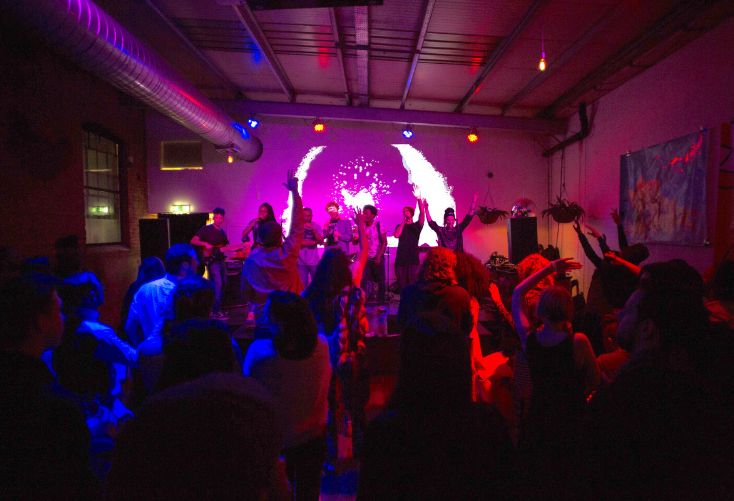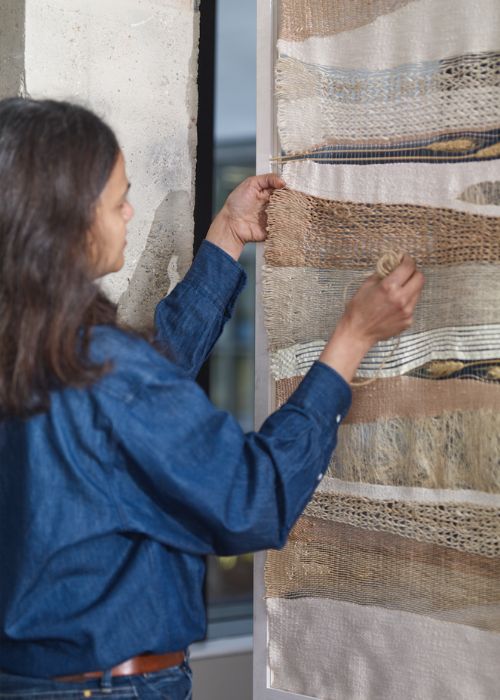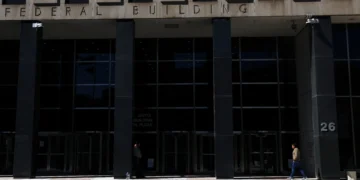- After long stints of working from home, people have come to expect both functionality and comfort from their office environments.
- Office art curation is becoming a more inclusive, collaborative experience that brings more creativity into office environments — in turn creating a positive workplace culture.
- Allwork.Space caught up with art studio Acrylicize’s Managing Director Paul Arad to learn how employers can use art to attract talent and ultimately make their employees happy.
During the height of the COVID-19 pandemic, workplace leaders were desperate to discover how to get employees back into the office.
Soon after, the Great Resignation took hold, and discussions pivoted towards how to avoid losing staff amidst an evolving workplace landscape.
Both discussions had one major takeaway: office culture can play a significant role in a company’s ability to maintain a happy, productive workforce.
Acrylicize — a multidisciplinary art studio that works with architects and businesses on branding, art installations and more — is helping organizations develop offices that fuel collaboration, creativity and culture.
Allwork.Space caught up with Acrylicize’s Managing Director Paul Arad to learn more about how employers can use art to attract talent and ultimately make their employees happy.
Transformation starts with disruption
Art has always featured in workplaces, but not in the modern and diverse ways it is now.

“I think what’s interesting is that [art is] becoming a lot more equitable,” says Arad.
In the past, office art collections were often curated or selected by the business owner, in alignment with their own tastes and vision for the space. But office art curation is becoming a more inclusive, collaborative experience.
“Now, I believe that workplaces are a reflection of all the individuals there,” Arad explains, “It’s much more about creating environments, areas and aesthetics that appeal to a wider range of people, and I think that’s what art does brilliantly. You can play with your environment, you can have revolving artwork, bring different artists in at different points and really rejuvenate the space through the purest forms of expression.”
Arad says that anything that brings more creativity into our environments is a positive thing, and something that’s going to be more and more mainstream as time goes on.
Acrylicize encourages integrating art in all forms within an office — 3D art, lighting design, unique canvases, and more.
Defining and understanding workplace culture
Before a company can elevate its brand culture through art and design in the workplace, it needs to be able to define its culture — and what drives it.
It’s difficult to express something clearly if you don’t quite know what that something is. But describing a concept as abstract as “culture” doesn’t come easy.
That’s why Arad recommends taking the time to really understand the company’s focus, how they utilize their workspace and what their aspirations are as a brand. This helps build a strong and lasting creative strategy for an office.
Ultimately, people have come to expect both functionality and comfort from their office environments, particularly after many have worked from home for so long.
“I think that’s a good thing and is putting the onus on employers to create amazing environments and experiences,” says Arad.

Credit: Acrylicize.
Achieving the “wow factor”
Arad says a lot of Acrylicize’s clients are on a mission to create an inviting experience for employees who are returning — or have recently returned — to the office, and they’re also looking to attract new talent.
When it comes to talent acquisition, flexibility is important. But work environments are also key, says Arad.
Offices need to facilitate focused and collaborative work, and make people feel like they are part of something bigger; they need to contribute to the occupant’s sense of purpose.
“What kind of things can tell our story? What kind of things can make people feel that they’re in a really wonderful environment?”
The way the space is designed, plus its functionality and dynamic work areas, and the art and overlay used, are what contribute to a work environment’s identity and individuality, and in a world saturated with options, individuality can be an attractive attribute.
Keeping it local
Working with local artists can help “ground” a workspace in its immediate environment, creating a “different buzz and energy about a space” and a “legacy” for creatives.
Collaborating with local artists can bring workspaces to life, including in communal spaces and areas like lift lobbies, that might otherwise go unnoticed.
Making QR codes available to scan next to commissioned work lets the viewer find out more about the piece and the inspiration behind it.
“It’s compelling and shows a layer that goes into the overall design of the space that sometimes people don’t have from first impressions,” says Arad. “We’re constantly trying to find ways to create connections, and layers of meaning and understanding, so if you want to explore further you have the ability and means to do so.”

Credit: Acrylicize.


 Dr. Gleb Tsipursky – The Office Whisperer
Dr. Gleb Tsipursky – The Office Whisperer Nirit Cohen – WorkFutures
Nirit Cohen – WorkFutures Angela Howard – Culture Expert
Angela Howard – Culture Expert Drew Jones – Design & Innovation
Drew Jones – Design & Innovation Jonathan Price – CRE & Flex Expert
Jonathan Price – CRE & Flex Expert













